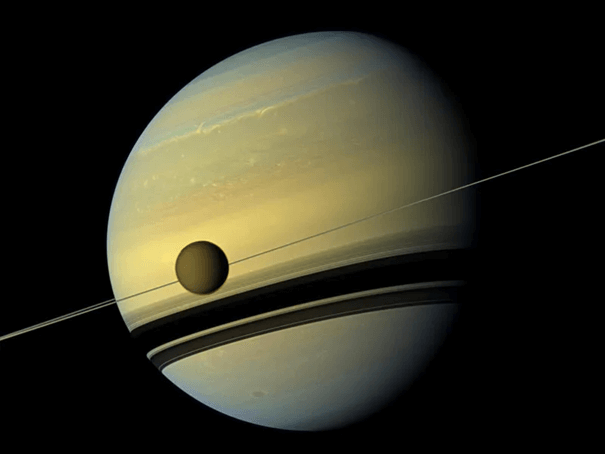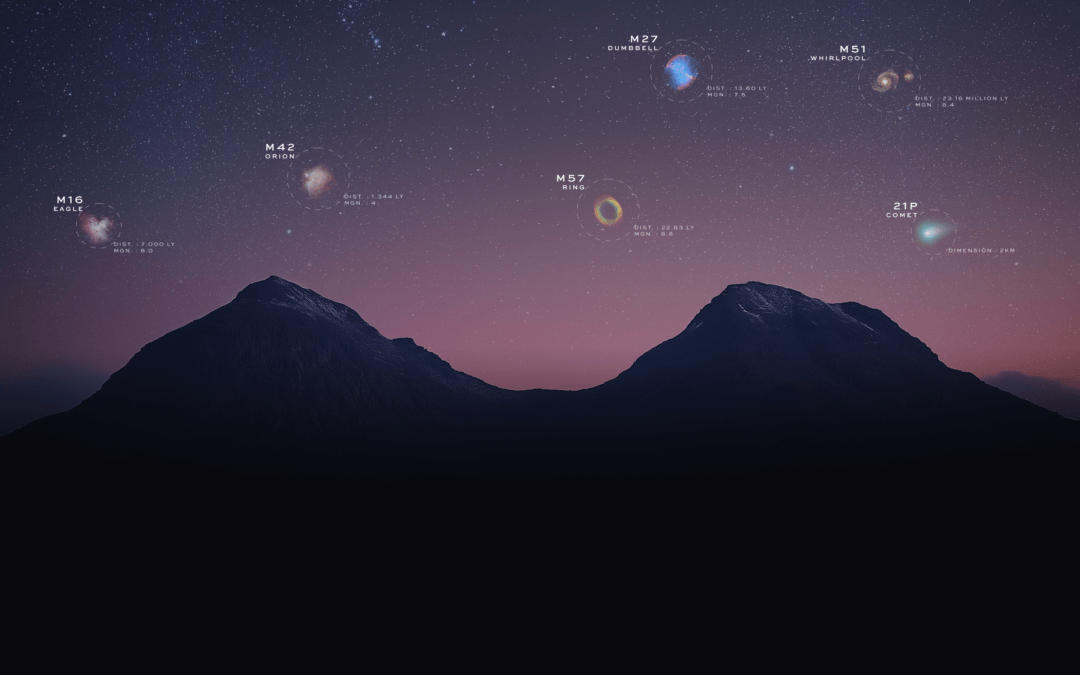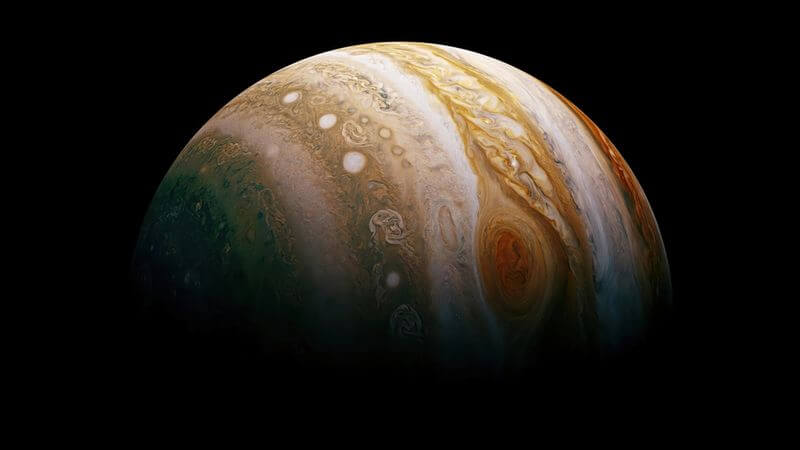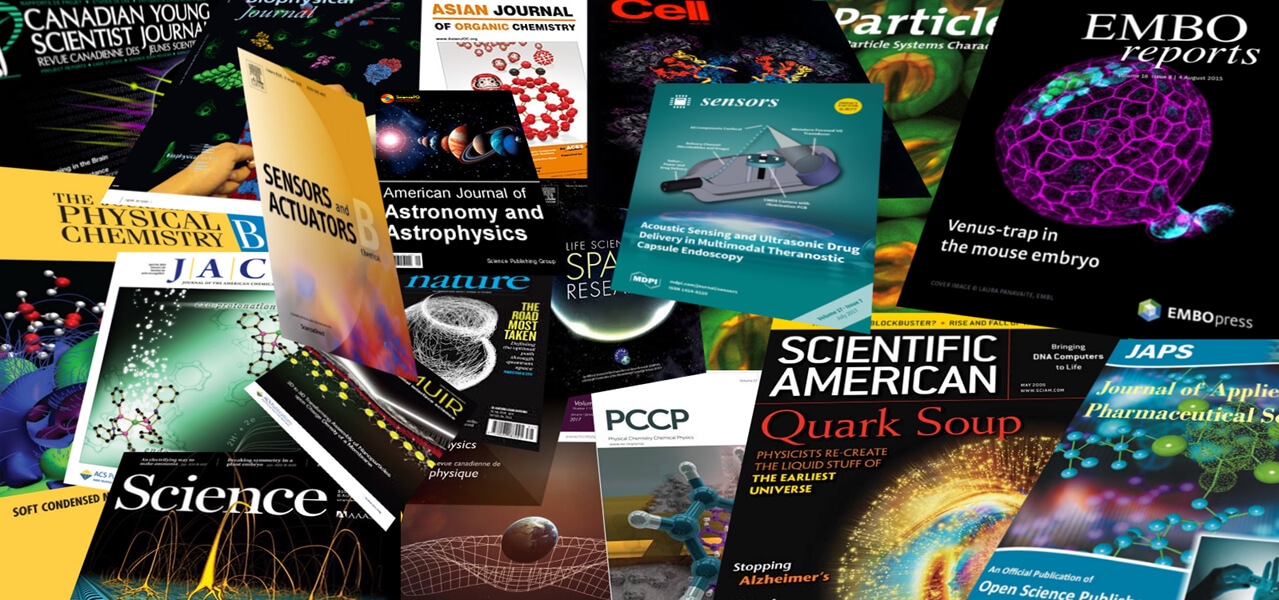Witnessing Saturn’s Cosmic Ballet: A Summer of Transient Events
This summer, the ringed planet Saturn takes center stage in our night sky, offering amateur astronomers a rare opportunity to observe fascinating transient events. Among these celestial spectacles, the shadow transits of Titan, Saturn’s largest moon, promise to be particularly captivating. Just as we previously explored Jupiter’s moon eclipses, these Saturnian events provide a dynamic viewing experience that changes from night to night.

Moon Titan appears in front of Saturn in an image captured by NASA’s Cassini spacecraft. Credit: NASA/JPL-Caltech/Space Science Institute
Upcoming Titan shadow transits in Universal Time (GMT)
|
Date |
Start |
Mid-transit |
End |
|---|---|---|---|
|
May 15 |
9:49 |
12:59 |
15:44 |
|
May 31 |
9:05 |
12:12 |
14:53 |
|
June 16 |
8:21 |
11:24 |
14:00 |
|
July 2 |
7:40 |
10:35 |
13:03 |
|
July 18 |
7:00 |
9:44 |
12:05 |
|
Aug. 3 |
6:25 |
8:52 |
11:04 |
|
Aug. 19 |
5:52 |
8:01 |
10:00 |
|
Sept. 4 |
5:25 |
7:09 |
8:50 |
|
Sept. 20 |
5:09 |
6:20 |
7:34 |
|
Oct. 6 |
5:32* |
Start and end times are when Titan’s full shadow is first and last visible entering and exiting Saturn’s disk, respectively. * Full shadow on disk only at mid-transit (source: Sky and Telescopes)
The Science Behind the Spectacle
These shadow transits occur because of the unique alignment of Saturn, its rings, and its moons from our vantage point on Earth. As Saturn progresses on its 29.5-year orbit around the Sun, our angle of view changes, sometimes showing the rings head-on (as in 2018 or 2033) and sometimes making them virtually disappear, as in 2025 or 2040, when the Earth is lying in the plane of the rings and moons. During these aligned periods, we can observe moons and their shadows crossing the planet’s face. So it’s either now or in 15 years!
Titan’s shadow is particularly noticeable because of the moon’s size – at 5,150 km in diameter, it’s larger than Mercury and second only to Jupiter’s Ganymede in our solar system. When Titan passes between Saturn and the Sun (from our perspective), its substantial size creates a clearly visible shadow on Saturn’s cloud tops.
As you turn your telescope toward Saturn this summer, remember that you’re witnessing a cosmic dance that has been playing out for billions of years. Each transit offers a unique opportunity to connect with the mechanics of our solar system and appreciate the beauty of celestial motion.
Happy observing!
Further readings
3 Reasons to observe this month
Every month, discover three unmissable celestial events to observe with your Unistellar telescope.
Two spooky appearances in the sky for Halloween
Every month, discover three unmissable celestial events to observe with your Unistellar telescope.
3 Reasons to observe this month Halloween Edition
Every month, discover three unmissable celestial events to observe with your Unistellar telescope.
Titan’s shadows
This summer, the ringed planet Saturn takes centre stage in our night sky, offering amateur astronomers a rare opportunity to observe fascinating transient events.
Observing Eclipses on Jupiter: Cosmic Spectacles Through a Telescope
The latest Unistellar App Update, version V3.0, is now live. Explore a smooth stargazing experience !
Unistellar Community Included In Multiple Scientific Papers
Did you know Unistellar Citizen Astronomers are often cited in published scientific papers? Find out how you can contribute too!



